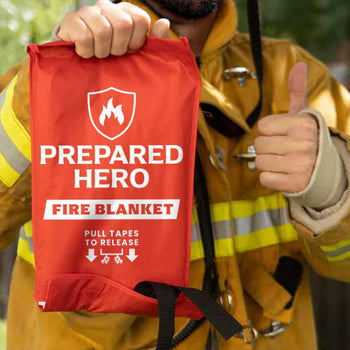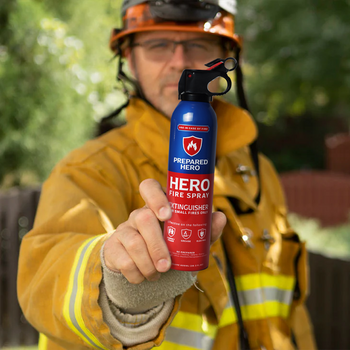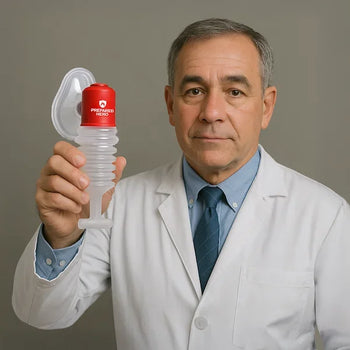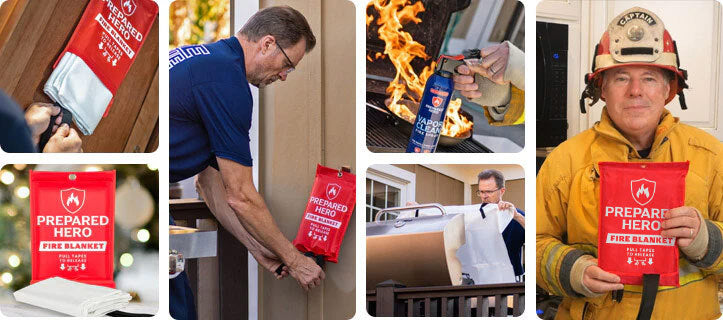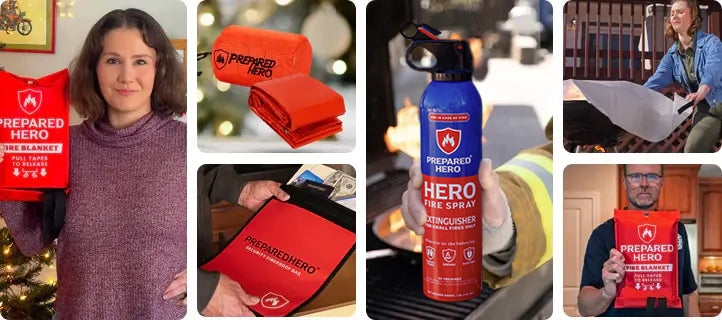Where you put your smoke detectors matters just as much as installing them. Proper placement makes sure they can detect...
Fire extinguishers aren’t all the same, and knowing the differences helps you act fast in an emergency. One of the most common types is the dry chemical fire extinguisher. It’s popular because it works on many kinds of fires. In this guide, we’ll break down what a dry chemical fire extinguisher is, what it’s used for, and how to use it properly.
What Is a Dry Chemical Fire Extinguisher?

A dry chemical fire extinguisher is a common fire extinguisher type used to put out different kinds of fires. In particular, it works on Class A (wood, paper, plastic), Class B (liquids and gases), and Class C (electrical equipment) fires.
Dry chemical fire extinguishers contain monoammonium phosphate, a yellow powder that stops fire by coating the fuel and cutting off its oxygen supply. It also interrupts the chemical reaction happening in the flames.
In addition, this type of extinguisher is pressurized with nitrogen. It usually comes in sizes from five to 20 pounds. Dry chemical extinguishers are usually found in hallways, labs, kitchens, break rooms, offices, and vehicles. Some are labeled “ABC”, while others might say “BC”. The latter means they don’t work on Class A fires. So, always check the label before using one.
What Is a Dry Chemical Fire Extinguisher Used For?

Dry chemical fire extinguishers are made to fight Class A, B, and C fires. As the term suggests, they contain a special powder that smothers flames fast and puts out the fire. Here’s what a dry chemical fire extinguisher is used for:
Class A Fires: Everyday Materials
Class A fires involve common solid materials like wood, paper, fabric, and trash. You’ll usually see them in homes, offices, or outside in dry areas. A dry chemical extinguisher coats the burning material with powder, cuts off its oxygen, and cools the fire down. This stops the fire and prevents it from reigniting.
Class B Fires: Flammable Liquids and Gases
Class B fires are caused by flammable liquids and gases like gasoline, oil, paint, and propane. These fires can break out in garages, kitchens, or near fuel storage. The extinguisher works by covering the flames with powder and stopping the oxygen and heat from feeding the fire. This helps put it out fast.
Class C Fires: Electrical Equipment
Class C fires occur when electrical outlets, wiring, or appliances catch fire. You can’t use water to put out electrical fires. However, you can use dry chemical extinguishers. The powder won’t conduct electricity, so it safely puts out the flames without putting you at risk.
How to Use a Dry Chemical Fire Extinguisher

Using a dry chemical fire extinguisher might look tricky, but the PASS fire extinguisher method makes it easy. Here’s how to use a dry chemical fire extinguisher properly:
1. Pull the Pin
Turn off the power first if you’re dealing with a Class C fire. However, you can pull the safety pin if you’re dealing with a Class A or B fire. Some dry chemical extinguishers may have tamper seals, so remove them before pulling the pins.
2. Aim at the Base
Then, point the nozzle or hose at the base of the fire. Do not point it at the flames. The fire burns from the fuel at the bottom, so aiming there puts the flames out faster.
3. Squeeze the Handle
Next, gently squeeze the handle to release the dry chemicals. Put steady, controlled pressure to keep the flow consistent. Don’t squeeze too hard or too fast because this can waste the extinguishing agent.
4. Sweep From Side to Side
Move the nozzle from side to side. Start from a safe distance and move closer as the fire gets smaller. Keep spraying until the fire is completely out and the affected area is cool.
Remember, you and your loved ones are the priority. Dry chemical extinguishers should only be used on manageable fires. Remember, a small flame can turn into a major fire in 30 seconds, so be careful. If the fire spreads quickly or you feel unsafe, evacuate and call for help.
Is a CO2 Fire Extinguisher a Dry Chemical?

No, a CO2 fire extinguisher is not a dry chemical extinguisher. They may look the same on the outside, but they have different uses.
As the term suggests, a CO2 extinguisher is filled with compressed carbon dioxide gas. When you use it, the carbon dioxide (CO2) is released as a cold gas that pushes oxygen away from the fire. Oxygen is an element of the fire triangle, so this extinguishes the fire.
CO2 extinguishers are great for Class B and C fires. They don’t leave any messy residue behind, which makes them perfect for areas with electronics.
Dry chemical extinguishers, on the other hand, spray a fine powder, usually monoammonium phosphate or sodium bicarbonate. This powder smothers the fire and stops the chemical reaction. They can handle Class A, B, and C fires.
To sum it up, CO2 fire extinguishers use gas, not powder. That’s the key difference. If you’re ever choosing between the two, knowing what kind of fire you’re dealing with makes all the difference.
Are All ABC Fire Extinguishers Dry Chemicals?
Yes, all ABC fire extinguishers use a dry chemical agent. They usually contain monoammonium phosphate, sodium bicarbonate, or a combination of the two. They can put out Class A fires (caused by common materials), Class B fires (caused by flammable liquids and gases), and Class C fires (caused by electrical equipment). That’s why they’re called ABC fire extinguishers.
In particular, an ABC fire extinguisher sprays out a fine powder that forms a layer over the fire. This layer removes oxygen from the equation and cools the fire. Since the dry chemical is non-conductive, you can safely use it on electrical fires. It also works quickly, making it a go-to for homes, offices, and some industrial settings.
However, keep in mind that ABC fire extinguishers are not made for all kinds of fires. You can’t use them against grease fires in kitchens or fires involving metal. Just make sure you're using them correctly, and you’re good to go.
What Is an Example of a Dry Chemical?
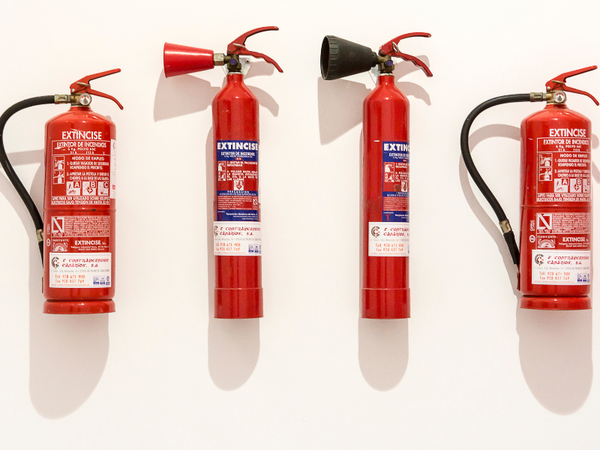
A common example of a dry chemical is monoammonium phosphate. It's the main ingredient in most dry chemical fire extinguishers. It works against fires involving wood, paper, plastic, flammable liquids, flammable gases, and electrical equipment.
Other examples of dry chemical agents include sodium bicarbonate and potassium bicarbonate. These are mostly used in BC dry chemical extinguishers used for Class B and C fires.
Dry chemicals are fine powders that stop fires by removing oxygen and cooling the burning material. They're also mixed with additives that prevent clumping and help the powder discharge smoothly. This is important because the powder won’t spray properly if it cakes up.
So, if you're looking at a dry chemical extinguisher and wondering what’s inside, chances are it’s one of these: monoammonium phosphate, sodium bicarbonate, or potassium bicarbonate.
Which Is Better, a CO2 or DCP Fire Extinguisher?
The better option between a CO2 (carbon dioxide) and DCP (dry chemical powder) fire extinguisher depends on the type of fire you’re dealing with. CO2 extinguishers work best against electrical fires and flammable liquids, while DCP fire extinguishers work against Class A, B, and C fires.
CO2 fire extinguishers work by removing oxygen and cooling things down. They also don’t leave residue, making them ideal for sensitive electronics, like in server rooms or labs.
On the other hand, DCP extinguishers work on Class A, B, and C fires. They can handle paper, wood, flammable liquids, flammable gases, and electrical fires. They use a dry chemical agent that stops the fire. However, the powder can be messy and damage electronics.
So, if you're in a place with sensitive electronics, use a CO2 extinguisher. If you need something more versatile for your house, a DCP fire extinguisher is better. Just make sure you use the right type depending on the fire you’re dealing with.
What Are the Disadvantages of Dry Chemical Fire Extinguishers?

A common disadvantage of dry chemical fire extinguishers is the powdery residue they leave behind. Once discharged, the powder spreads fast and covers a wide area. It can settle into electronics, furniture, and tiny crevices, which makes cleanup hard. Plus, it can damage sensitive equipment.
Another issue is inhalation. The powder creates a thick cloud that can make it hard to breathe, especially in enclosed spaces. Breathing in the powder can also irritate your throat, nose, and lungs. This can affect people with asthma or other respiratory issues.
What Type of Fires Does a Dry Chemical Fire Extinguisher Extinguish?
Dry chemical fire extinguishers extinguish three types of fires: Class A, B, and C. That’s why you’ll often see them labeled as ABC fire extinguishers.
Class A fires are caused by common solids like wood, paper, fabric, plastic, or trash. They usually occur at homes and in offices. Meanwhile, Class B fires involve flammable liquids and gases, like gasoline, oil, or paint. They usually occur in garages, workshops, or chemical storage areas. Lastly, Class C fires involve electrical equipment like outlets, computers, and appliances.
In short, dry chemical extinguishers are versatile because they can handle a mix of fire types. This makes them a smart choice for homes and businesses.
How Long Do Dry Chemical Fire Extinguishers Last?
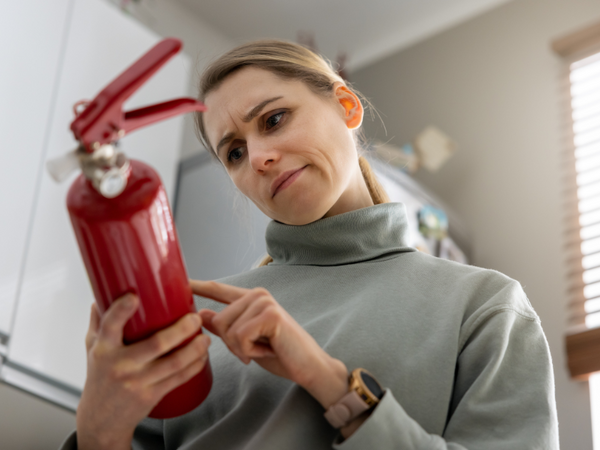
Dry chemical fire extinguishers last about 10 to 12 years. However, you need to maintain them to make sure they work. Check the pressure gauge and make sure the nozzle isn’t clogged. Dry chemical fire extinguishers also need hydrostatic testing, the frequency of which depends on the manufacturer’s instructions.
Plus, rechargeable dry chemical fire extinguishers need to be recharged every six years, or sooner if the powder has settled or if you notice any leaks or damage.
What Is the Range of a Dry Chemical Fire Extinguisher?
The range of a dry chemical fire extinguisher falls between five and 20 feet. This range depends on many factors, like the size of the extinguisher, the pressure inside, and the nozzle design.
Larger dry chemical fire extinguishers usually have a longer range. The pressure inside also helps determine how far the chemical can reach. The lower the pressure, the shorter the range. Lastly, the nozzle design can determine the range because it controls the flow rate, direction, and dispersion of the extinguishing agent.
How Can You Tell the Difference Between a CO2 and a Dry Chemical Fire Extinguisher?

You can tell the difference between a CO2 and a dry chemical fire extinguisher by looking at the color, discharge, and pressure gauge.
CO2 extinguishers usually have black bands, while dry chemical extinguishers often have blue or white bands. In addition, CO2 extinguishers discharge carbon dioxide. This usually creates a white cloud or dry ice and doesn't leave residue behind. On the other hand, dry chemical extinguishers release a fine powder that can leave a messy residue. CO2 extinguishers also don't have a pressure gauge, while dry chemical extinguishers usually do.
Dry Chemical Fire Extinguisher Alternatives
While dry chemical fire extinguishers help, they can be expensive, heavy, and hard to store. They might also leave a mess that’s hard to clean up.
A fire spray is an easy-to-use, lightweight, and affordable alternative to dry chemical fire extinguishers. Prepared Hero’s fire spray is also biodegradable and non-toxic. Unlike a dry chemical fire extinguisher, you can safely use it around your family and pets.

Here’s a table summarizing the differences between Prepared Hero’s fire spray and a regular dry chemical fire extinguisher:
| Prepared Hero’s Fire Spray | Dry Chemical Fire Extinguisher |
| Lightweight, easy to carry | Heavy, hard to carry |
| Affordable | Expensive |
| Easy to store | Needs more space for storage |
| 100% biodegradable | Mostly made of non-biodegradable materials |
| Non-toxic | Can Irritate the Skin |
| Easy to clean | Hard to clean |
| Safe for kids and pets | Not safe for kids and pets |
Another alternative is a fire blanket, which depletes the fire’s oxygen supply. By doing this, it puts out small Class A, B, and C fires in seconds. It also doesn’t leave a mess because it simply covers the fire.

Unlike dry chemical fire extinguishers, Prepared Hero’s fire blanket doesn’t expire. You can reuse it as many times as you want as long as it’s not damaged. Plus, you can use it to save someone on fire.
Here’s a table summarizing the differences between Prepared Hero’s fire blanket and a regular dry chemical fire extinguisher:
| Prepared Hero’s Fire Blanket | Dry Chemical Fire Extinguisher |
| Lightweight, easy to carry | Heavy, hard to carry |
| Affordable | Expensive |
| Doesn’t expire | Expires |
| Easy to store | Needs more space for storage |
| Non-toxic | Can Irritate the Skin |
| Doesn’t leave a mess | Leaves a mess |
| Safe for kids and pets | Not safe for kids and pets |
| Can be used on humans | Can’t be sprayed on humans |
Do you want reliable, easy-to-use, and affordable tools to put out small fires before they become raging infernos? Check out Prepared Hero’s fire prevention tools here, and get up to 51% off on certain items. Stay prepared, hero!


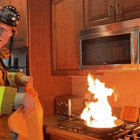 Fire
Fire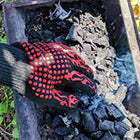 Safety
Safety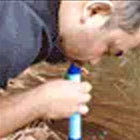 Survival
Survival Protection
Protection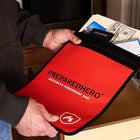 New
New
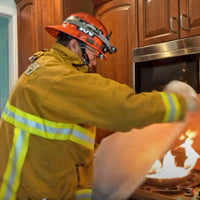 Fire
Fire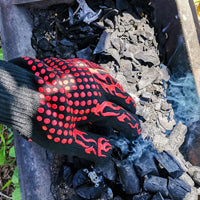 Safety
Safety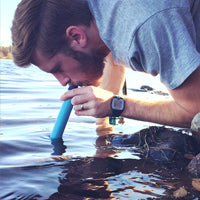 Survival
Survival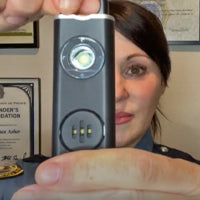 Protection
Protection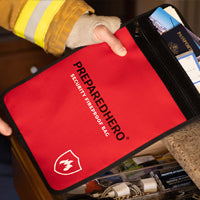 New
New
